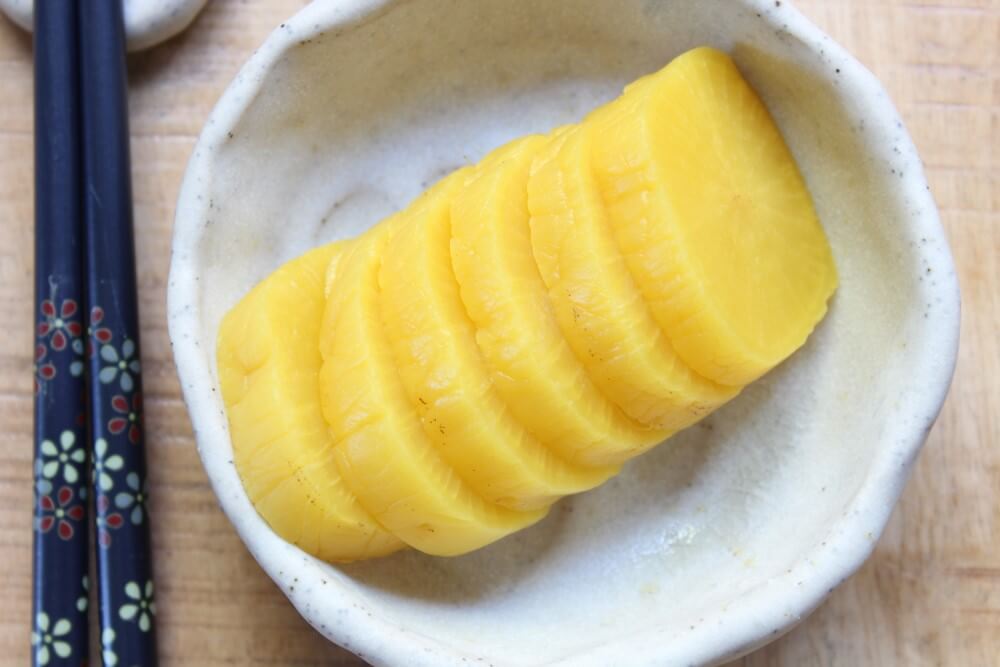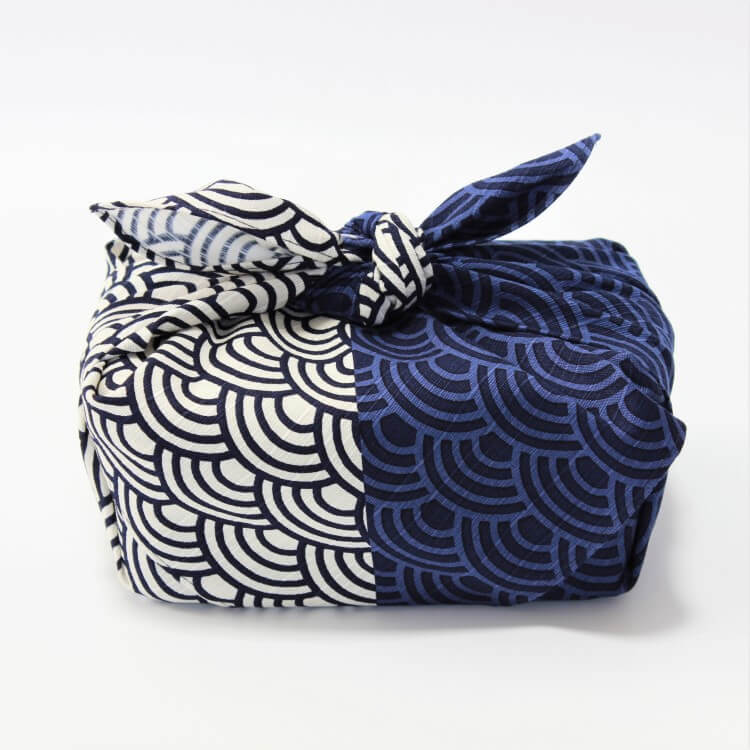“Takuan” or “Takuwan”, 沢庵 (pronounced ta-ku-one)
If you ever needed a ‘filler’ for your bento box, then look no further than the humble Takuan! In fact, you could probably just use Takuan for your whole lunch… ok maybe that’s a bit much but it is definitely tempting as far as the author is concerned. You see, the crunchy texture and sweet and just slightly sour taste makes Takuan one of those foods where you crave for more once it’s in your mouth and tummy. So what is it?
What is Takuan and its origin?
Takuan is often a yellow pickled “daikon” (radish) that is used widely as a side dish during meals and even on its own. It has a crunchy texture and the ones you might find in supermarkets are typically sweet. These days, Takuan can come in many different variations and even different flavours (try with chilli!).
Takuan originated during the Edo period (1603 to 1867) in Japan. It is said that a priest by the name of Soho Takuan developed this pickled root, and it did not initially have a name. When the Shogun Iemitsu Tokugawa visited the priests’ temple and tried it, he was so impressed with the unnamed pickle that he suggested it be named after the priest. This pickled radish spread from Edo (old Tokyo) to Kyoto and southern Japan (Kyushu) in the 18th century.
Two slices or three?
In Japanese restaurants, two slices of Takuan are often (but not always) served as a side dish. This custom is said to have started in the Edo period, because it was taboo to give the Samurai one or three slices of Takuan as it represented techniques of slicing with katana swords. This custom though at that time may have just been centred around parts of Edo. In the Kansai region, some restaurants purposedly serve 3 slices of Takuan as it the number is thought to be auspicious.
Wonderful Japan. Even the number of pieces of food has meaning!

How is it made?
The traditional method of making Takuan is to sun dry for up to several weeks, then soak for several months in rice bran and salt, and other ingredients like kelp to add flavour. The finished product can be quite pungent. Due to the inconsistency of the traditional pickling process which can impact the appearance and taste, modern mass production methods employ the process of osmosis instead of sun drying. This speeds up the dehydration process while reducing costs, and is done by placing the radish in a salt or sugar solution so that water is extracted out of the root. Sweetening, umami and colouring agents are also typically added during the pickling process to satisfy consumer expectations.
Where can you find it?
If you live in Japan and just want the ‘common’ variety (i.e. sold by big food companies), then any supermarket or convenience store will have it. It can either be found in a cold storage section or at room temperature. Otherwise, like with all things Japan, there are speciality varieties that are boutique made and can only be found in certain regions or ordered online. If you search online on marketplaces like Rakuten, you can find top ranking Takuan in Japan. If you live overseas, then Asian supermarkets which stock Japanese foodstuffs should have it, as it is quite popular. Price range can vary from a few hundred to few thousand yen for the same weights.
How can you use it in bentos?
As they are pickled, you don’t need to really worry about prep or storage conditions for bentos. Takuan are often sold ‘as is’, and if so, you just need to slice it into small circular pieces and stick them in. They are also often sliced fine into strands for bentos, but there’s no right answer and it’s up to your imagination. If anything, they will make a great visual enhancement to your bento creation. Will you be using Takuan for your bento lunch next?




